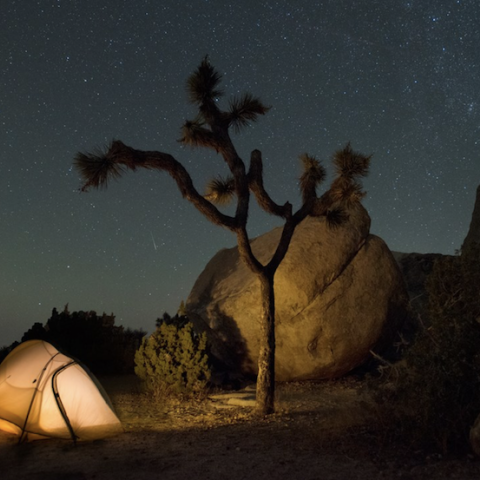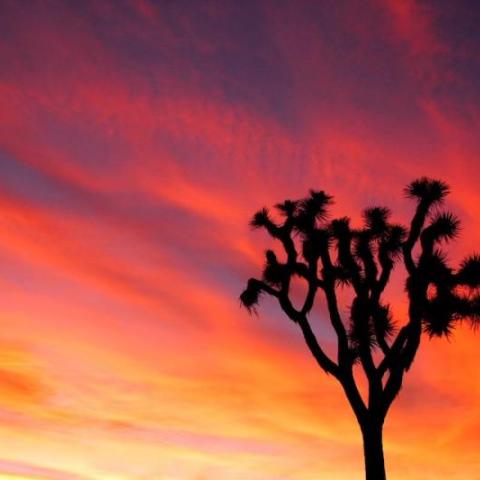
Dainty columbines make perfect photo candidates/Jean Bjerke
What a revelation it was, when I learned a few years ago that an overcast day is better than a bright clear sunny one for shooting wildflower images. So if you are in a national park during wildflower season, rejoice if you get overcast weather and go looking for wildflowers!
Even a rainy day can be great for wildflower images, and shooting just before dawn or just after sunset can also work as long as you don’t have wind and you use a tripod for a longer exposure in low light.
Most of us, if we have a cell phone or camera, instinctively want to photograph wildflowers when we see a beautiful display. Some parks and monuments celebrate with wildflower festivals such as these:
* Great Smoky Mountains National Park Wildflower Pilgrimage (April)
* Shenandoah National Park Wildflower Weekend (May)
* Cedar Breaks National Monument Wildflower Festival (July)
* Waterton Lakes National Park Wildflower Festival (June)
Other favorite parks for wildflowers, based on a National Parks Traveler Readers Survey, include Joshua Tree National Park for springtime desert flowers, Mount Rainier National Park, Glacier National Park, Rocky Mountain National Park, and Acadia National Park. Every national park will offer wildflowers at the right time of year. Check with the visitor center for the best places to see them, and for the best hikes and trails for wildflowers.

Wild roses at Yoho National Park in Canada/Jean Bjerke
Here are some thoughts on how to get the best wildflower images and make the most of your photography:
* Photograph on an overcast day. Why? The camera does not “see” as wide a range of light as our eyes. The bright light of mid-day casts harsh shadows, and creates bright highlights on the camera’s image sensor that often exceed the camera’s ability to record. This results in an image that does not capture all of the data of the lovely color that attracted your eye. The flower will be gorgeous in your image if it is photographed in softer light.
So if flowers are in direct sun, create some shade with your own shadow or an umbrella. Or use a diffuser (a fairly inexpensive device made like the sun shade you use in your car) purchased from a photography store. In fact, you can also use the sun shade from your car to shade the flower. Or wait for a cloud to cover the sun, or find other flowers that are not in direct sunlight.
* Choose a flower in perfect condition and fill the frame with a close-up shot. You might be surprised how often flowers that look beautiful from a distance have brown edges, or have been nibbled by an insect. Any imperfections will be magnified in a close-up shot, so select a perfect bloom to photograph. Don’t just shoot from a standing position unless the flower is growing out of a rocky ledge or bank right in front of your face at eye level. Get down on the same level with the bloom - which may require sitting, squatting, or even lying on your stomach on the ground. Move around to get the best angle. Get close to the flower or zoom in with your lens.
* Pay attention to the background. If you focus up close on the flower, especially at a large aperture (F/4 or F/5.6) or if you use either a macro or telephoto lens, the background will be an artistic out-of-focus blur, which can create a very pleasing composition and focuses the viewer’s attention on the blossom itself. Try to get some other color and a piece of blue sky in the background. If you can include a mountain or other striking element in the background, use a smaller aperture (like F/11 or F/16) for greater depth of field.

Time your visit to Joshua Tree National Park to get chollas in bloom/Jean Bjerke
* Use a tripod. It will keep your camera steady, which helps assure a sharp image.
* Shoot at a speed fast enough to stop movement. Depending on the wind, this might be 1/250th of a second or 1/1,000th. If you shoot on Auto the camera will probably choose a slower speed, which means your flower will be out of focus if the wind is blowing. So use Aperture priority, Shutter priority, or manual settings. Check your manual for details.
* Don’t pick or trample wildflowers. Some sensitive species of plant such as the wild Calypso Orchid can actually be killed if the soil near them is trampled, even if the plant itself is not touched. Be careful not to harm the flowers and plants, so that they can continue to bloom for years to come.
* Enter a photography contest. Once you have some beautiful wildflower photographs, consider submitting them to a photography contest. The parks mentioned here that sponsor wildflower festivals all have photography contests, and you can find many more.
Have fun with the artistry of photographing wildflowers. Wildflowers inspire us with their colors, textures, delicate forms or showy display. They surprise use with their exquisite beauty or call our attention with bright color. They bloom on dark forest floors, in rocky crevices above timberline, in the desert, in moist woods and mountain meadows.
Capturing these expressions of nature’s art can be immensely satisfying. Make prints, show the images on social media, and find other ways to share them with people who love their beauty, color, and variety.

Closeups of wildflowers, such as these ladies slippers, might require you to get down on your knees/Jean Bjerke
Jean Bjerke a nature photographer. She and her husband operate as Randy & Jean Bjerke Photography. Their work is carried in ten stores in three states, and is available through their website.



 Support Essential Coverage of Essential Places
Support Essential Coverage of Essential Places







Comments
I love your recent article, esp. the pictures
Even such an amateur photographer such as myself could learn from a reading of this article.
Great tips - and outstanding, sharp images. Thanks!
Springtime in Acadia National Park appears the best time to see wildflowers there, based on our interviews and research for a recent blog post. The rhodora in Great Meadow in particular are spectacular, and have been the subject of park commentaries for nearly 100 years.
http://www.acadiaonmymind.com/2015/05/spring-blossoms-rhodora-inspires-i...
Wonderful article and fabulous photos! Thanks for all the great tips!
I love the pictures in this article!
Nice job Jean (and Randy whom I'm sure contributed)!